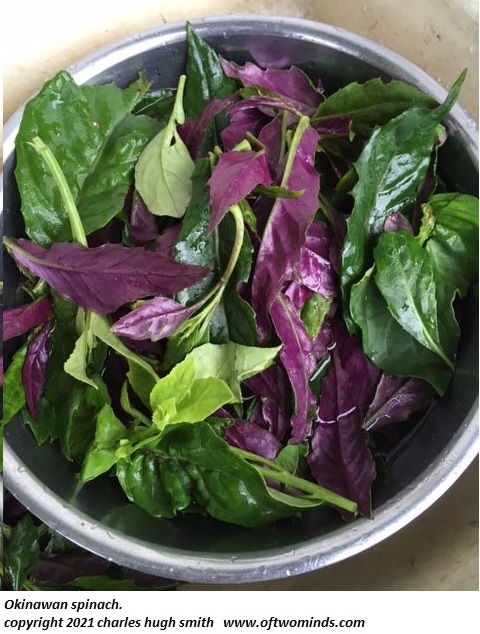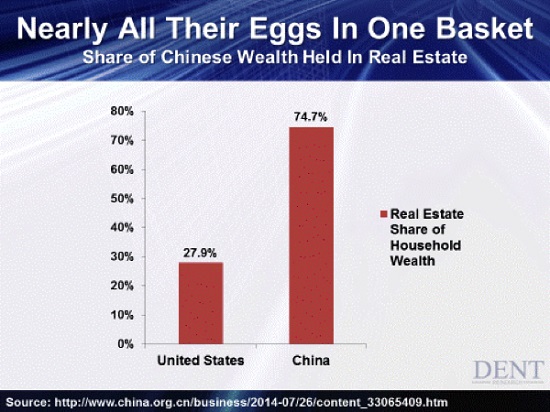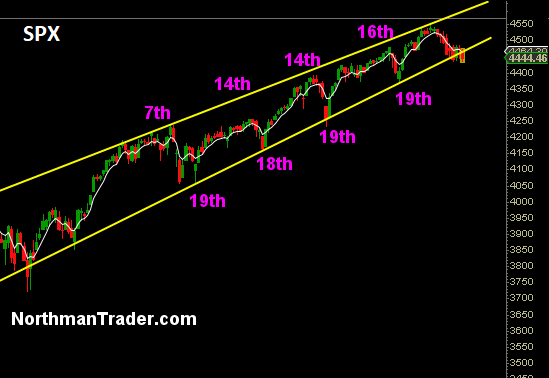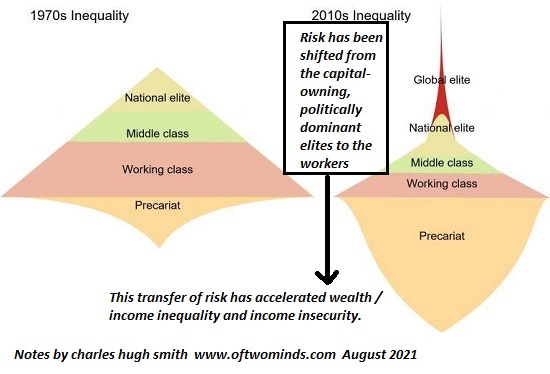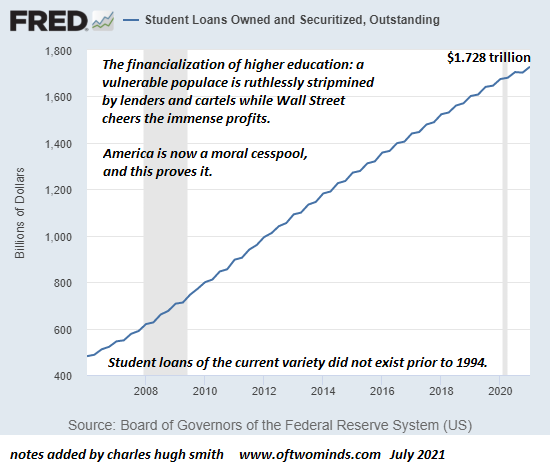There is a great deal of joy and satisfaction in gardening; benefits include saving money, eating healthier, sharing the bounty with others and reducing the derealization / derangement of modern life. There are few reasons to expect food prices to drop and many reasons to expect even higher prices ahead. Headlines like this are now standard: Global Food Prices Hit Fresh Decade High In October, and there is little evidence that the drivers of higher food prices–rising fertilizer costs, supply chain disruptions, poor harvests, California’s water woes, to name a few–will suddenly reverse. . Rather, as I have often noted, the world’s run of extraordinarily good luck on weather and harvests may have ended.One solution–a garden–is within reach of many of us, and
Topics:
Charles Hugh Smith considers the following as important: 5.) Charles Hugh Smith, 5) Global Macro, Featured, newsletter
This could be interesting, too:
Nachrichten Ticker - www.finanzen.ch writes Die Performance der Kryptowährungen in KW 9: Das hat sich bei Bitcoin, Ether & Co. getan
Nachrichten Ticker - www.finanzen.ch writes Wer verbirgt sich hinter der Ethereum-Technologie?
Martin Hartmann writes Eine Analyse nach den Lehren von Milton Friedman
Marc Chandler writes March 2025 Monthly
|
There is a great deal of joy and satisfaction in gardening; benefits include saving money, eating healthier, sharing the bounty with others and reducing the derealization / derangement of modern life. There are few reasons to expect food prices to drop and many reasons to expect even higher prices ahead. Headlines like this are now standard: Global Food Prices Hit Fresh Decade High In October, and there is little evidence that the drivers of higher food prices–rising fertilizer costs, supply chain disruptions, poor harvests, California’s water woes, to name a few–will suddenly reverse. |
|
| Rather, as I have often noted, the world’s run of extraordinarily good luck on weather and harvests may have ended.One solution–a garden–is within reach of many of us, and with a bit of creative outreach, it’s open even to apartment dwellers in city centers. Many cities have community gardens on city-owned parcels–I was one of the first in line when Honolulu launched its Makiki community garden in Other options include rooftop gardens and finding a neighbor with a garden who’s willing to share. But tens of millions of urban/suburban American households have front and backyards. |
|
| My Facebook friend Cherry Liu offers us all an outstanding example of how to turn a weedy urban yard into an amazingly productive garden that supplies not just her household but others in her community.
I asked Cherry for a few before-and-after photos and a bit of background, and here is her “In 2020, I was furloughed from my 9-5 office job and felt enormous despair that I was so readily disposable, yet I had struggled for many years to find purpose in the jobs I’d had until then anyway, so there was also a sense of a new beginning. My mother had helped me buy a house in 2019 because I was struggling with my mental health for a long time and was unable to support myself financially. Little did I know that I would soon transform the weedy jungle around this house into a garden sanctuary for myself and a source of inspiration and hope for my community as well. |
|
| Although I didn’t start gardening until 2020 at the age of 30, the ancestral farming knowledge from my mom’s side of the family (who were all farmers) coupled with the propensity for quick learning which my dad (who was an extraordinary teacher and educational psychologist) instilled in me from a very young age rushed out from the recesses of my repressed mind. I am convinced that I am not the only one who has been repressed in this way, as we are all so conditioned to operate within the daily rituals of consumerism, but certainly I am a strong example of this.
In 2021, I started working for local urban farming and food forestry organizations and my experiences in my personal garden inform how I communicate with the community at large about the importance of growing our own food. The communal nature of my Chinese ancestry also influences how I think of urban farming as a rebellion against the Western capitalistic machine that birthed the monoculture farms which continue to destroy our precious symbiotic ecosystems. I have begun efforts to give power back to BIPOC (Black, Indigenous, and people of color) organizations in the Seattle area by facilitating land sharing at the Beacon Food Forest which has historically been based in a Eurocentric-centered framework of permaculture. |
|
| My intention is to encourage people to reconnect with nature and remember their place in it through the fresh food that they eat and the abundant beauty that their garden returns with just a bit of nurturing. In order to include as many people in this revolutionary awakening, I have opted to deemphasize labels, certifications, and other barriers to growing food and community.”
Cherry’s before-and-after photos offer a template for how to transform an unproductive yard into a productive garden. Readers who want additional information can follow her on Instagram @cherryscottage or visit her website www.cherryscottage.com. |
|
| Thank you, Cherry, for sharing your experience and expertise. There is a great deal of joy and satisfaction in gardening; benefits include saving money, eating healthier, sharing the bounty with others and reducing the derealization / derangement of modern life.
Now is the ideal time to start planning your 2022 garden and making whatever connections you need to share a patch of ground, nudge your city/town to launch community gardens, etc. Here are a few of the many archived posts featuring my postage-stamp Bay Area garden: frugal folks may want to pay special attention to the last link, The Cash Value of Home Gardens |
|
Tags: Featured,newsletter








